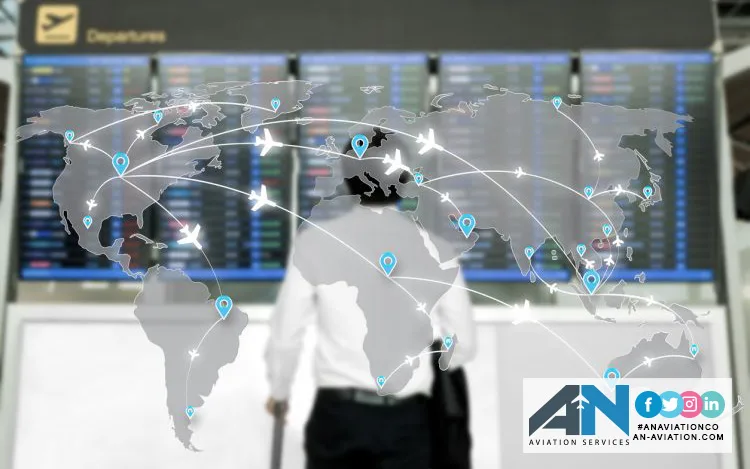
As technology continues to reshape industries around the world, international travel is no exception. Enter the digital passport—a modern solution to make traveling easier, faster, and more secure. Instead of carrying a traditional paper passport, a digital passport allows travelers to store their information on their smartphone or secure online platform. This change could soon revolutionize the way we cross borders.
In this blog, we’ll explore how digital passports work, the benefits they offer, and how this innovation is transforming the future of travel.
What is a Digital Passport?
A digital passport is an electronic version of your traditional passport. Rather than carrying a physical booklet, your passport information is securely stored on a mobile device or accessible online. It contains the same essential details, such as your name, nationality, and travel history, but presents them in a more efficient and modern format.
Key Features:
- Securely stores passport data on your smartphone or another digital platform.
- Can be easily scanned and verified at airports and border checkpoints.
- Works with biometric systems like facial recognition for identity verification.
- A digital passport eliminates the need to carry a physical document and opens the door to a smoother, faster travel experience.
How Does a Digital Passport Work?
The digital passport is part of a growing trend of digital transformation in travel. Here’s a step-by-step look at how it works:
- Uploading a Digital Passport: Travelers will upload their passport data onto a secure mobile app or platform. This could involve scanning the physical passport or receiving a digital version directly from the passport-issuing authority.
- Biometric Verification: To enhance security, digital passports work in combination with biometrics. When you arrive at the airport or border checkpoint, biometric systems (such as facial recognition, fingerprints, or iris scans) verify that you are the authorized passport holder.
- Secure Digital Scans: Instead of presenting a booklet, travelers will simply scan their digital passport at checkpoints, using either a QR code, NFC (near-field communication), or other secure methods to verify their identity.
This seamless process reduces paperwork, shortens wait times, and increases security, offering a more efficient way to travel internationally.
Benefits of Using a Digital Passport
Switching to a digital passport comes with several important benefits for travelers, border security, and the overall travel industry:
- Convenience: Carrying a digital passport on your smartphone means you’re less likely to forget or lose it. Your essential travel document is always with you, securely stored on your device.
- Faster Border Crossings: By combining digital storage with biometric verification, digital passports can significantly speed up the process at security checkpoints, reducing long lines at airports.
- Increased Security: Physical passports can be lost, stolen, or forged. A digital passport is encrypted and linked to your biometric data, making it much harder for someone else to misuse.
- Easier Updates: When you renew your passport or update personal information, changes can be applied online, eliminating the need to wait for a new physical document to arrive in the mail.
- Environmentally Friendly: By reducing the need for physical documents, digital passports also help reduce the environmental impact associated with paper-based travel documentation.
These advantages demonstrate how digital passports can modernize the travel experience while enhancing both security and convenience.
Uploading a Digital Passport: How it Works?
One of the first steps in using a digital passport is uploading your passport information into a secure digital platform. But how exactly does this process work?
- Scan Your Physical Passport: To create your digital passport, you’ll likely start by scanning the physical passport using your smartphone or another device. The app will then extract the relevant information (such as your passport number, name, nationality, and expiration date) and securely store it on the platform.
- Link to Biometrics: For added security, the app will prompt you to link your digital passport with biometric data, such as a facial scan or fingerprints. This ensures that your identity can be quickly and securely verified at checkpoints.
- Storing the Passport: Once uploaded and linked, your digital passport will be securely stored in an encrypted format on your device or a cloud-based system. Only authorized users and border security personnel will be able to access this information when necessary.
The process of uploading a digital passport is straightforward and designed to ensure maximum security, protecting your personal data while making it easier to access during travel.
Digital Passports and Biometric Technology
The power of the digital passport comes from its integration with biometric technology. This combination adds a critical layer of security and speed to the identity verification process:
- Facial Recognition: Airports and border control agencies are increasingly using facial recognition technology to match travelers’ faces with the photo stored in their digital passport. This means you won’t need to present physical documents or even a boarding pass.
- Fingerprint Scans: In some cases, fingerprint scans may be used to verify your identity. This adds an extra layer of protection, making it even harder for anyone to use a digital passport that isn’t theirs.
- Iris Scans: For airports with the highest security standards, iris scans may be integrated as part of the verification process, making the entire travel experience smoother and safer.
With biometrics, the digital passport becomes not just a convenient way to store travel documents but also a highly secure tool for identity verification.
Challenges and Concerns with Digital Passports
While the idea of a digital passport is promising, there are still some challenges and concerns that need to be addressed before it becomes a universal solution:
- Data Privacy: Storing sensitive personal information online always raises concerns about privacy and security. Governments and developers need to ensure that digital passport systems are equipped with top-tier encryption and protection against data breaches.
- Technical Issues: Digital passports rely on working technology. What happens if your smartphone battery dies? Or if the app crashes? These are real concerns that must be resolved to ensure the reliability of the system.
- Global Compatibility: Not all countries may adopt digital passport technology at the same rate. Travelers may need to carry both physical and digital passports during the transition period to ensure seamless border crossings in countries that still require physical documents.
Addressing these challenges will be key to ensuring that digital passports are both secure and practical for widespread use.
The Future of Digital Passports
The adoption of digital passports marks a significant step toward a more digital and connected future for international travel. As the world becomes more tech-driven, the advantages of digitizing essential documents like passports will become even more apparent.
- Widespread Adoption: Several countries, including Finland and the Netherlands, have already started testing digital passport programs, and more nations are expected to follow.
- Global Standardization: To fully unlock the potential of digital passports, there will need to be international collaboration on standards and compatibility. Once agreed upon, this will make cross-border travel faster and more secure.
- Integration with Other Documents: In the future, your digital passport could be integrated with other important travel documents, such as visas, vaccination records, and boarding passes, creating a single platform for all your travel needs.
The future of the digital passport looks bright, and we may soon see a world where travelers no longer need to carry physical passports when crossing borders.
Conclusion: The Digital Passport – A Smarter Way to Travel
The digital passport is set to revolutionize how we travel, offering greater convenience, faster border crossings, and enhanced security. With its integration of biometric verification and secure digital storage, the digital passport is a glimpse into the future of international travel. However, addressing concerns around privacy, technology reliability, and global adoption will be key to making this system a universal reality.
As the travel industry continues to digitize, digital passports could soon replace the traditional paper-based system, making the world a little easier to explore.









